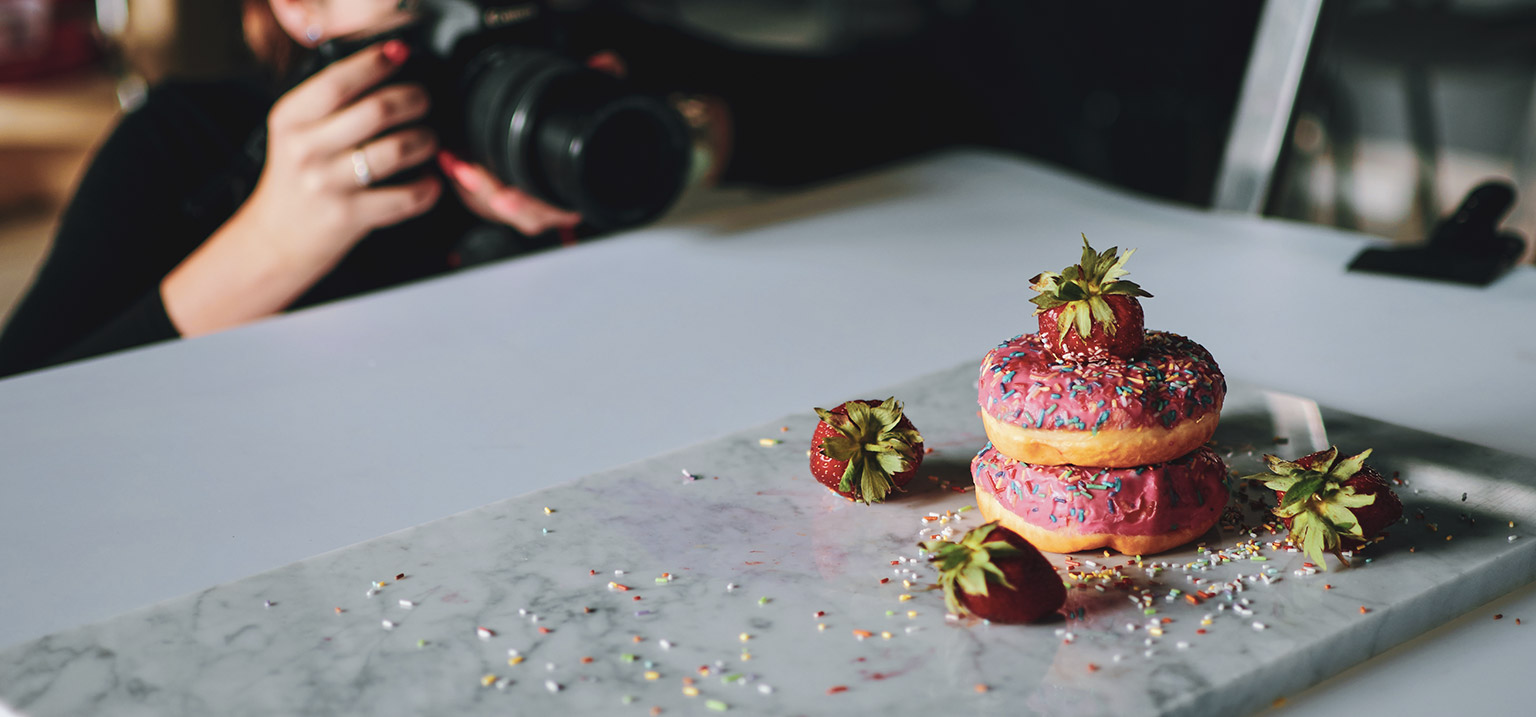We use the term Image Making to discuss the process of image creation and the analysis of their meaning. Image making can be particularly important in advertising where an image will often need to convey a specific message.
An image's message can be discussed using the terms denotation and connotation.
Denotation
Denotation refers to the literal interpretation of an image. What is in the image, what is happening in the image.
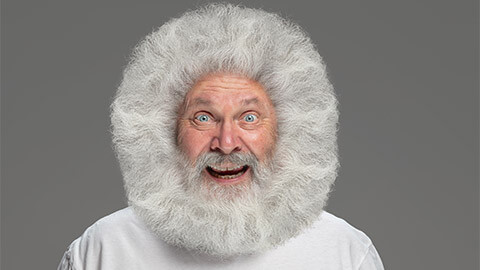
Consider the image presented. We may be able to assign some meaning already however looking at it from a denotative perspective we can describe the image as:
"A senior person isolated over the grey background. Their face appears joyful, with their grey hair and beard creating a circle frame around their face."
As you can see the detonation of the image does not assign or describe any meaning in the image.
Have a go at a coming up with a denotative description of the following image.
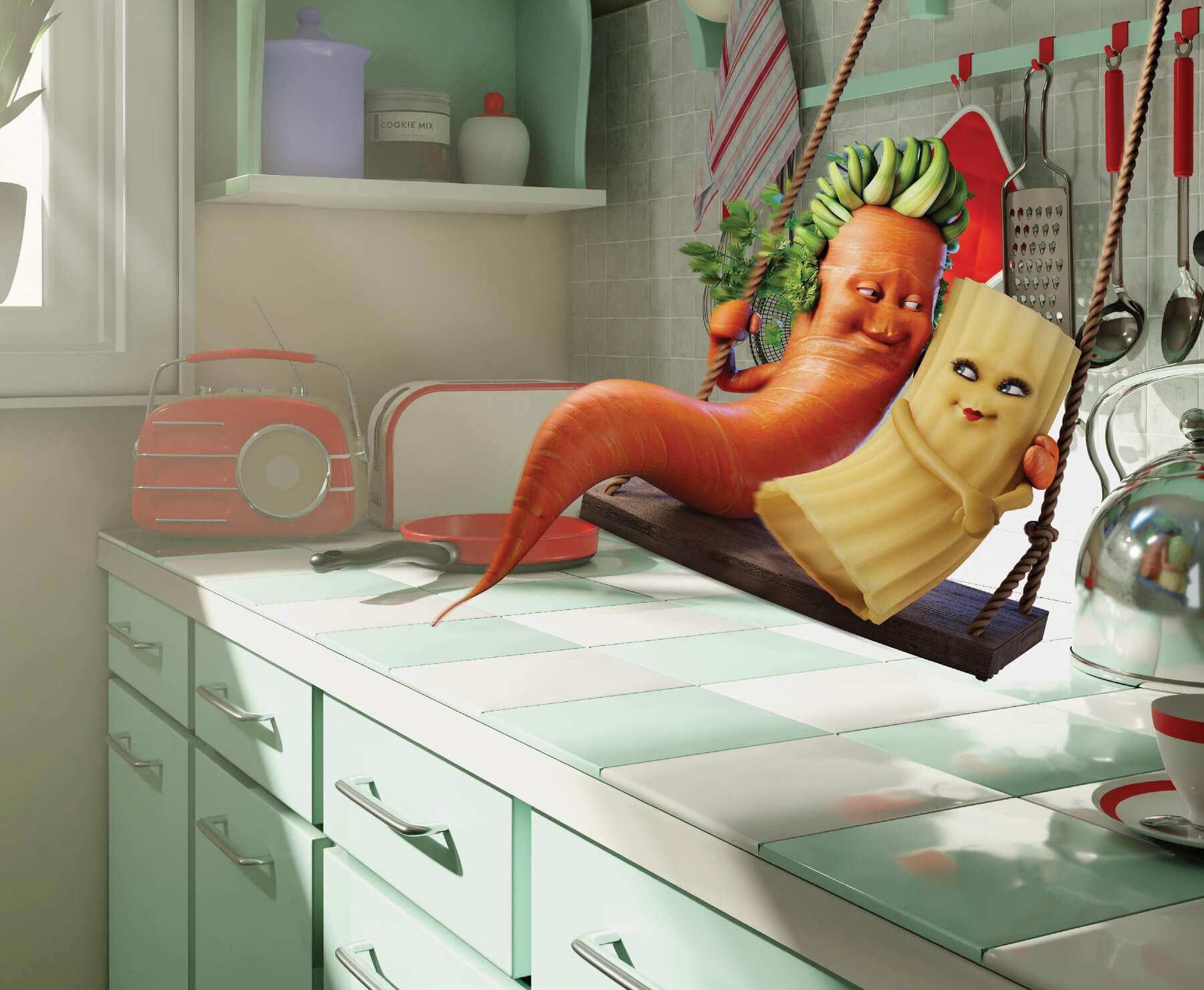
From The Perfect Match by Ogilvy, 2020
Perhaps you came up with something like this...
"The image is computer generated and shows an anthropomorphic carrot and a pasta piece sitting on a swing. The two characters are looking into each other's eyes and smiling at each other. The carrot has one arm around the pasta. The swing is set in a kitchen with light entering from a window."
Connotation
Connotation refers to the layers of meaning that may be present in the image. It is why certain elements are included and why certain things are happening.
Take a second look at the image of a carrot and pasta piece.
- Why would the characters be on a swing together?
- Maybe because they are friends?
- The way they are looking at each other and smiling might indicate that they are in love.
- The light coming through the window makes the scene look more romantic than platonic.
The image appears to depict a perfect moment, of a happily matched couple.
This interpretation fits perfectly with the image when we see it in the context of the ad it was created for.
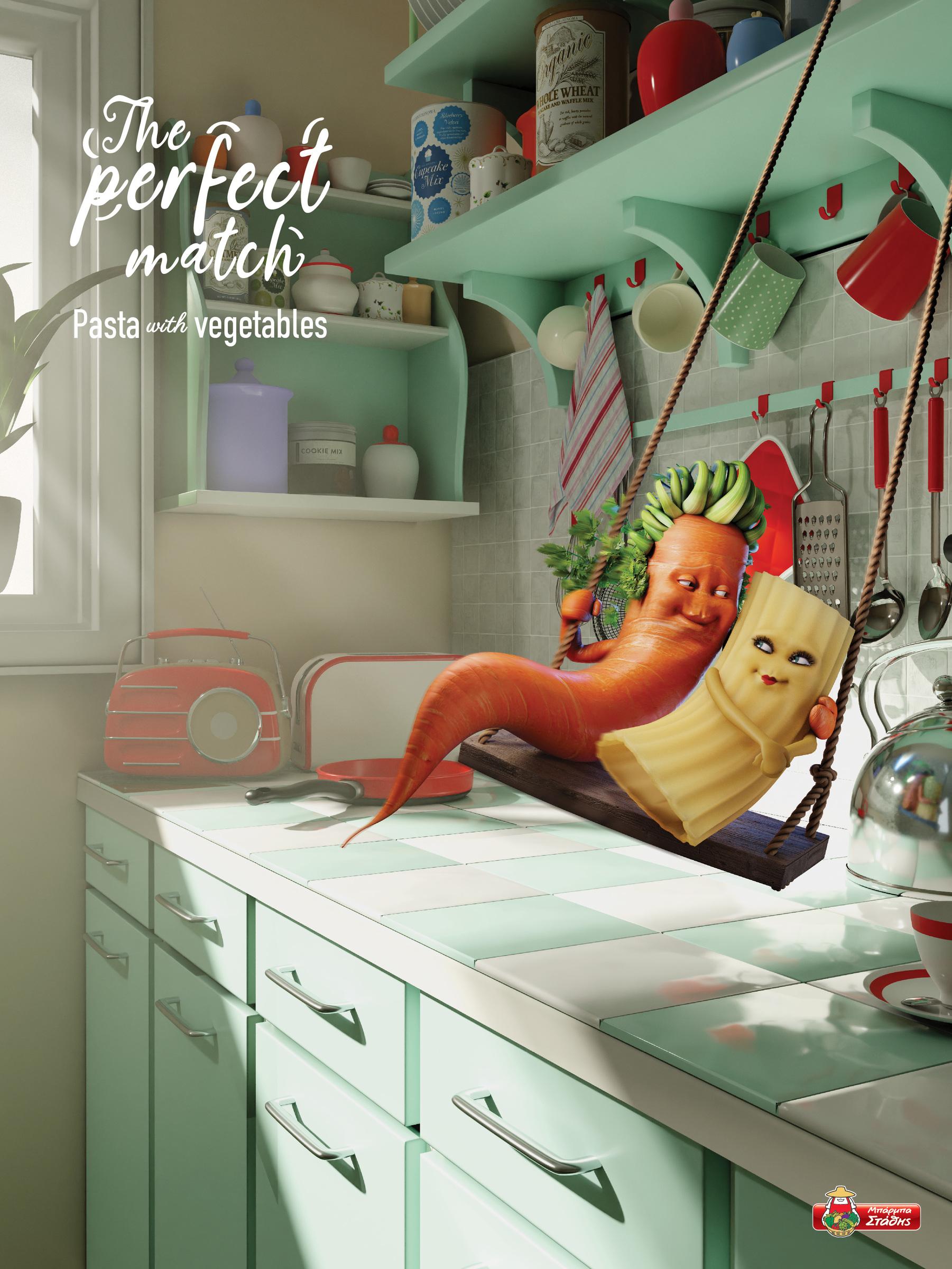
What about the image with the senior man? What do you think the connotations of that image are? Here it is again.

Advertising and marketing professionals try to convey elements of a brand, a product, and a relatable story in a short timeframe. Using images to capture the attention of a viewer is often more effective than a headline or slogan on its own.
Images used in advertising often show exaggerated or hyperbolic scenes or scenarios. They often use visual metaphors to convey their messages.
This ad is for a common cold relief medication called Sudafed.
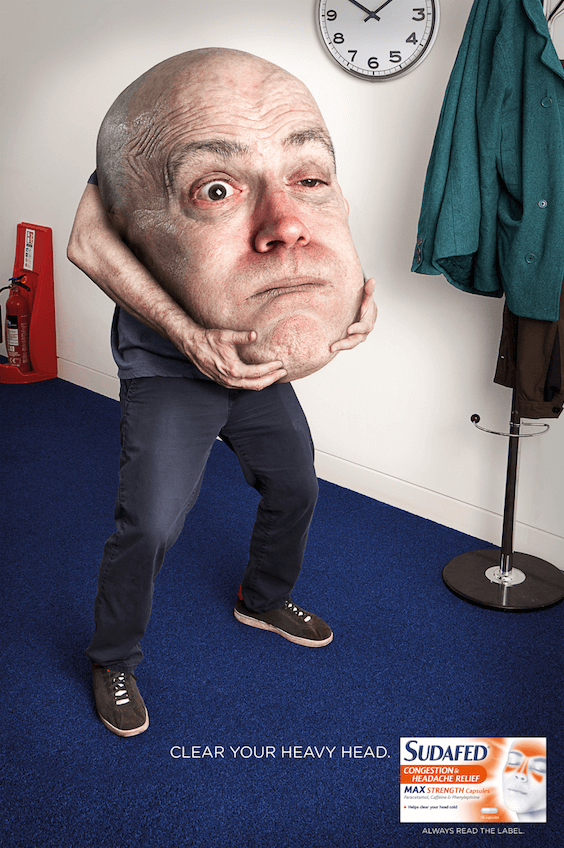
From Sudafed by Andy Smith Creative, n.d.
The over exaggerated head captures the attention of the viewer. Having the image of the medication below clearly indicates that it will relieve this head cold feeling.
Uruguay radio station Océano FM uses these images, with the tagline "Music drives you".
Océano FM: Music Drives You, From Music Drives You by Amen 2021
The images are from the perspective of the back seat. Looking forward you would normally see the reflection of the driver in the rear-view mirror. These images have superimposed images of famous artists with the connotation that they are in the driver seat, fulfilling the promise of the tag line. Below are creative images used in advertisements. Use them as a source of inspiration and consider your own ideas.

Currently there are 3.78 billion social media users-worldwide which equates to about 48% of the population. (Statista, 2020). Have a look at the following graph on recent social media usage for New Zealand.
Leading social networks in New Zealand in 3rd quarter of 2020 by Thomas Hinton © Statista 2022.
As you can see, YouTube and Facebook are the two platforms that dominate the New Zealand social media market.
To create marketing campaigns on social media, there are a few things you should know. An article by Maryam Mohsin for Oberlo provided these statistics:
10 social media statistics you need to know in 2021 [infographic] by Maryam Mohsin © 2015-2022 Oberlo.
When looking at all of these statistics you might feel that you are out of your comfort zone. Allen Klein, an award-winning expert keynote speaker, once remarked that 80% of what people learn is through social media posts.
So how do we catch people’s attention on social media? With social media marketing images. They are an important aspect of content marketing since people prefer to look at the image first before deciding whether to read the text.
So, what are the best social media marketing images? These will depend on a few variables:
- What are you trying to achieve?
- Who your target audience is?
- What is your brand?
- What is the message you want to get out to the world?
Let us now look at how we can use images for social media marketing.
Images for social media marketing
As a marketer, you do not want people to scroll past your social media post to a bigger or brighter image.
Check out these suggestions on how to use engaging images to draw people into your images.
- Bigger is better: Make sure the visuals are as high-quality as possible, whether you develop them yourself or find them elsewhere. The photos that reflect your brand should be sharp and clear, not blurry nor full of pixels.
- Use faces: Include faces in your photographs wherever you can. Even if your readers are unfamiliar with the people in the photographs, they will be able to identify with them.
- Take your own photos: Give your followers a behind-the-scenes look inside your company or go on a trip or photograph everything related to your business.
- Invest in photos: Some stock photo sites allow you to purchase credits and pay per photo, while others offer monthly subscription plans that allow you to download a certain number of photos.
It is important to be diverse in the use of your social media marketing images. You will need a lot of images to keep your audience engaged, but you will also need a lot of variety to keep them interested and generate enough material without running out of ideas. We are going to have a look at the following four types of images to keep user engagement up.
- User-generated content
- Product images
- Behind-the-scenes images
- Lifestyle images.
User-generated content (also known as UGC or consumer-generated content) is content made by someone who is not an official representative of your business and is not related to your brand. It could be a status update on social media, a review, a video, a podcast, or a variety of other formats.
According to studies the most prominent benefit of UGC is that 70% of customers are more willing to believe user-generated material rather than branded content. Brands across the world are investing in consumer-generated marketing because of this perceived credibility.
One might ask the question – Why would social media users promote a brand without compensation?
There are two reasons for this phenomenon:
- People enjoy expressing themselves in various ways. Social media is an easy way for people to create content and share it with others.
- Other incentives exist for creators. Even though they are working for free, many of these self-employed creators have distinct reasons for creating user-generated material such as personal brand exposure or practice.
UGC and the impact on branding
Consumers have evolved become the world's most productive content providers. 350 million images are uploaded to Facebook every day, 95 million photos and videos are shared on Instagram, and over 500 million tweets are sent out on Twitter. User-generated content has shown to be the most reliable, memorable, impactful, and freely available source of material for marketers. Let us examine the following video on some of the pros and cons of UGC.
Social media allows users to submit and upload any content they want; therefore, it is important to monitor content regularly.
Getting customers to create UGC
Since UGC comes from your consumers, it is simply a matter of locating and sorting their promotional content to find the finest content for the job. You may either search for UGC (most commonly through social media) or set up a direct submission system where customers can upload content directly to your business during contests and promotions.
There are three ways to get customers to create UGC:
- During specific stages of the purchasing process, encourage buyers to create UGC
- Make engaging experiences, specific locations, and unboxing events that people will want to discuss.
- Customers are asked to create UGC in exchange for a reward or prize.
Let us take a deeper look into these ways to understand how to use them.
Encourage buyers to create UGC
Encourage customers to create UGC by providing an easy tweet or Instagram story to share after a purchase, including a note with an eCommerce product instructing them to share their unboxing, and sending them an email a few days or weeks after they receive their product asking them to share their feedback on social.
Case study: Aerie
Aerie, a lingerie and swimming brand, invited their customers of all ages and sizes to wear their designs and share it. They pledged to stop retouching swimsuit photos and encouraged its audience to do the same. To promote this message through UGC, the brand donates $1 to the National Eating Disorders Association for every unedited swimsuit photo an Instagram user posts with the hashtag #AerieReal.2
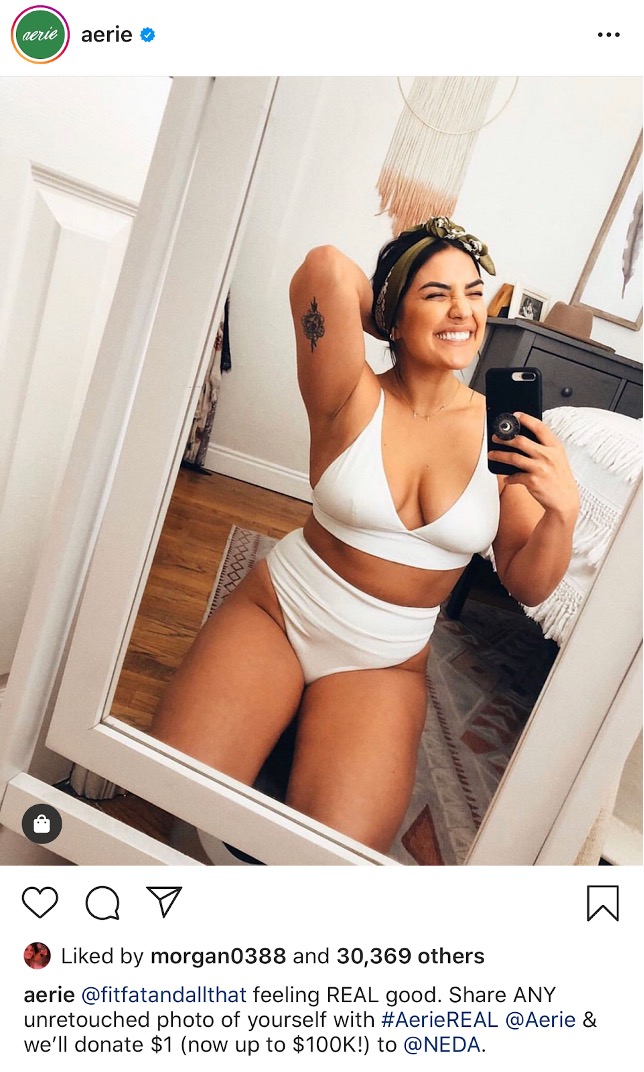
©Aerie Instagram
Make engaging experiences
By creating engaging experiences, using specific locations, and unboxing events you can reach out to key influencers in the industry. Unboxing is a terrific video marketing strategy for companies selling high-end products that are not ordinary. Take a look at how giant corporations like Burger King have been using unboxing videos.
Creating UGC in exchange for a reward or prize.
This is not a marketing strategy that runs every day; rather, it is a promotion that runs a few times a year to raise brand recognition using user-generated content. You can launch prize campaigns in combination with your existing UGC strategy.
Case study: La Croix
The social media accounts of sparkling water La Croix are filled with user-generated content. From fan art to photos of young adults — its target demographic — posing with their favourite flavours, La Croix populates its feeds with content created by people who clearly love its product.
And although the content comes from a variety of creators, La Croix manages to maintain a consistently branded look. Scroll through its Instagram page and you will see bright colours, sunny landscapes, and smiling faces again and again. La Croix accomplishes this in part by hosting giveaways of branded merchandise, such as the shirt featured below, and by providing interactive displays that its fans want to engage with.2
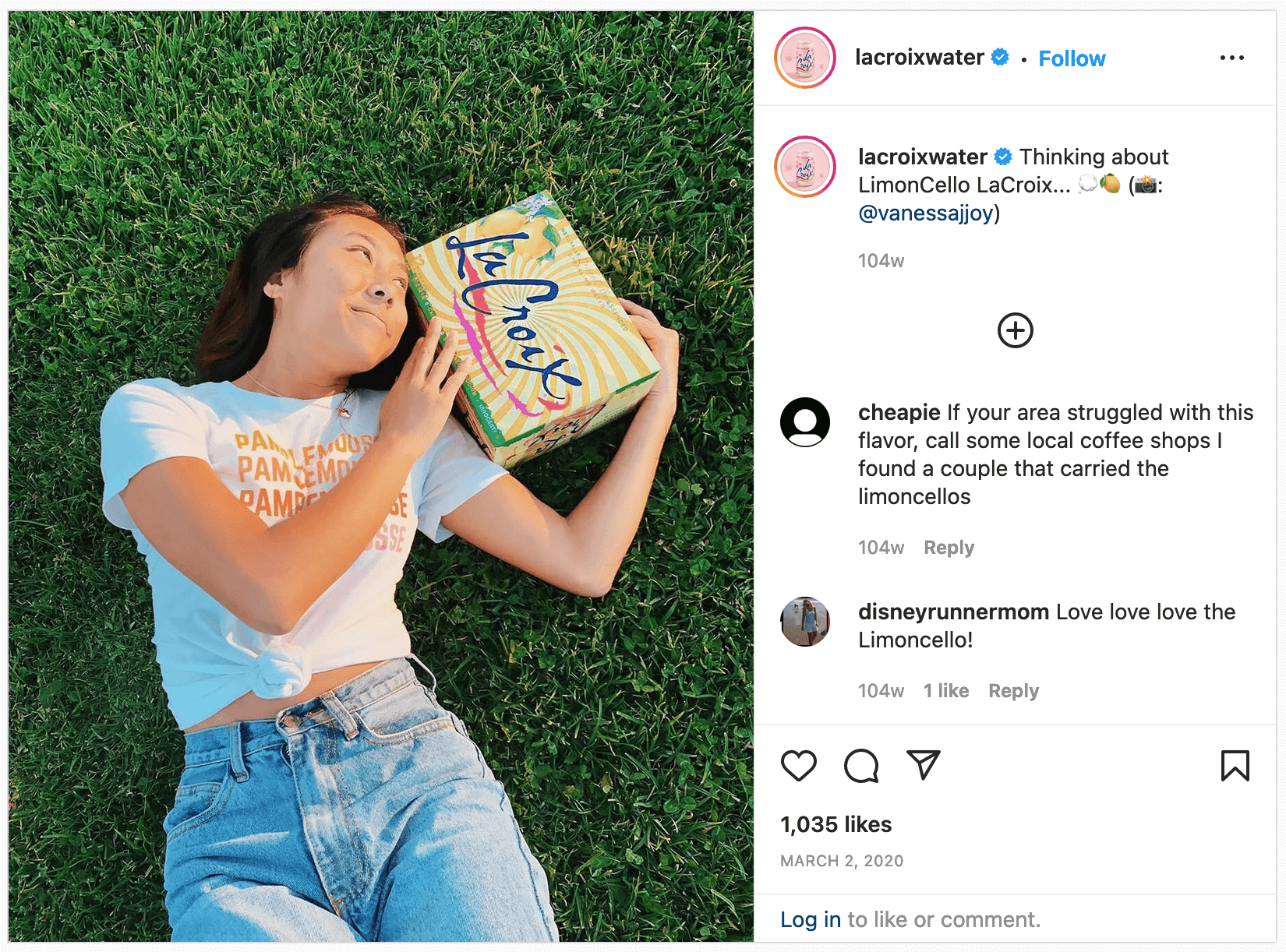
©lacroixwater Instagram
By incorporating user-generated content into your marketing strategy, you are offering potential buyers an actual look at what your consumers think of you rather than just supplying them with your brand's point of view. Let us dive into another type of image creation. Product photography is a modern spin on still life photography. Let us have a look.
Did you know that people only remember only 20% of what they read and 80% of what they see? The power of a picture is difficult to ignore, and if you do not include high-quality images of your products on social media or your website, you may be missing out on some significant sales.
Product images, is exactly what it sounds like: images shot and featured on websites and social media platforms to promote your product or service.
We hear a lot these days about marketing a lifestyle on social media, and while that is important, you also need to show off the products. Product images are the perfect way to focus on a product's detail and what it can provide to potential customers.
The importance of product images
The quality of your product images can often determine the value of your products and the trustworthiness of your brand. As a result, having high-quality, appealing product photos can be really beneficial. If a picture is worth a thousand words, the perfect product image is worth a thousand website visits.
Product photography can have a significant impact on customer behaviour and sales, therefore it is important to consider the pros and cons of creating product images. Look at the following infographics on the advantages and disadvantages when using product images.
Types of product images
There are a variety of product photography styles to choose from. The various types allow you interested to develop a niche in which you capture items that are intriguing or inspiring. Check you the following shots that can be used when creating product images.
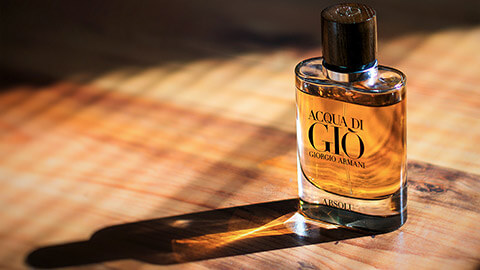
Individual shots
Individual shots, in which a single object is the focal point of the image, are the most popular style of product images. This image supports the product photographer in emphasising a certain item's unique characteristics.
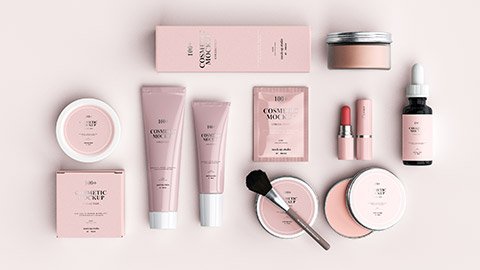
Group shots
When there are several products in a range, such as a skin care line of products, groups images are used. Group images are also used when there is a relationship between the objects, for instance in a promotion where a customer receives one product if they purchase another.

Detail shots
These are close-up images of one of the product's features. Detail shots are utilised to highlight unique characteristics of a product that may not be found on other similar products.
Product images, like all photographic disciplines, requires a combination of skill, experience, originality, and an eye for the finished image. Let us look at how to produce product images.
Product image production techniques
We have all experienced the power that a high-quality photo on a website or social media can have on a business. Overexposed, grainy images from a phone make the business appear less professional and trustworthy.
Taking product images with your smart phone
It is not as simple as pointing and shooting when it comes to product photography. To create great photos, even the simplest things require the right equipment, lighting, and space. Have a look at the following video for some tips to create the perfect image.
Check out the following accordion for a summary on the techniques tips that you can use to create product images.
Never underestimate how different forms of light can help (or hurt) your product photography. The appropriate lighting setup can help you show those crucial decision-making product qualities.
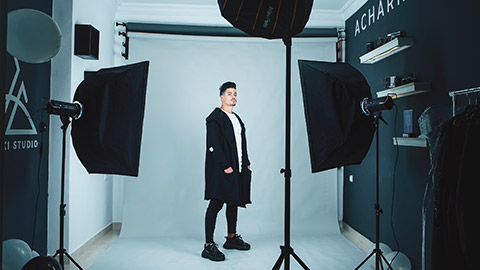
A tripod will assist standardise photo angles and style for your product range while reducing camera shake.
To give your images a clean and consistent look and prevent distractions, place your white backdrop behind your product. You may use a white paper sweep or purchase inexpensive poster board. You will also need a table on which to set up your backdrop.

A Portable and Inexpensive Seamless Background System by Taylor Mathis ©2022 Fstoppers
A bounce board, also known as a reflector card, is a board that reduces shadows by "reflecting" or "bouncing" the main light back onto the surface beneath your product.
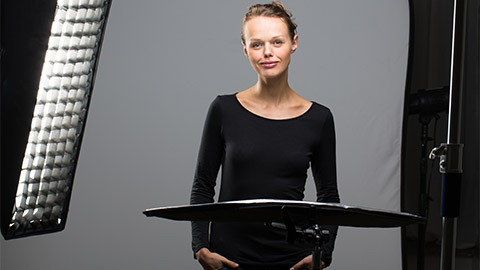
Although the thought of editing images may appear daunting, it is actually rather simple using your smartphone. Adobe Lightroom is a great editing tool with all the basic editing capabilities as wide lenses, a healing brush and more.
You can expand out into new styles of photography as you become more comfortable behind the camera. Be as creative as you want! Let us now have a look at Behind the scenes images for more inspiration.
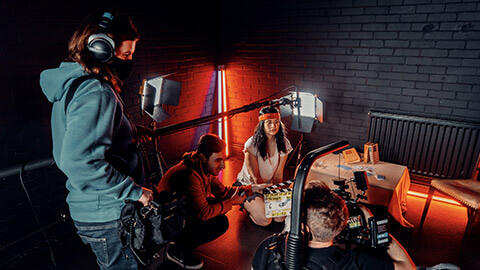
Remember when DVDs were the only way to watch movies? Back then if there was a camera shooting a movie, there was another camera shooting the director, shooting the movie.
Behind the scenes footage has had the interest of people for many years. People are engaged with seeing how things work and learning about what goes into the creative process. This has since been carried on in social media, music videos, clothing brands and products.
Behind the scenes content reveals what is going on behind the scenes of the brand they adore and follow. It is all about showing the process and not the product.
The content can include:
- The culture
- Management
- Personnel
- The day-to-day operations of the company.
You need to ensure that you respect individuals' privacy and also protect sensitive company information when creating behind-the-scenes content.
Behind-the-scenes content on social media
Behind the scenes content helps to build the Know, Like, and Trust Factor when you give consumers an inside peek at your brand. Customers can learn more about you and what you have to offer.
Then they begin to like you, which leads to a level of trust. And it is this trust that you will need to attract customers and clients to your company. People will only buy from companies they know and trust!
You do not have to come out as uninteresting and bland just because you are developing a brand. That is what draws people in and humanise the brand.
Behind-the-scenes content types
You will need a lot of photographs to keep your audience engaged, but you will also need a lot of variety to keep them interested and generate enough material without running out of ideas.
Take a look at the list below for ideas on how to humanise your content by creating engaging behind-the-scenes content.
Sneek peaks
Consider the 'Exclusivity' factor: including your clients in your latest product will always make them feel important.
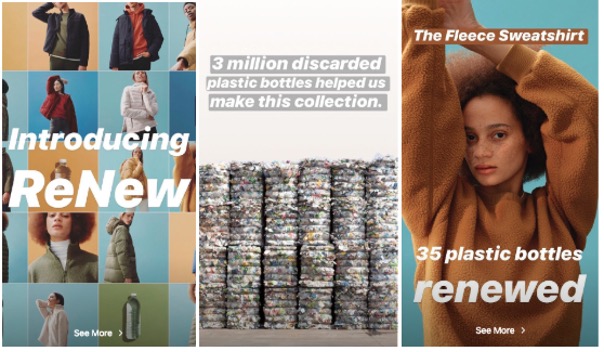
7 Creative Ways to Hype a New Product on Social Media by Cole Nowicki © 2022 Hootsuite Inc.
Team building and company events
Many offices hold regular events or social gatherings, which can generate a lot of interesting behind the scenes material. If the team were having fun, it will show in the images or film, and your viewers will notice.

Behind The Scenes Video Marketing Tips for 2021 Copyright @ PointInTimeStudios 2018. All Right Reserved
Updates
If your company is doing something new and significant, your customers will most likely want to hear about it, so keep them up to date on anything new or upcoming.
Personal
People are naturally curious and sharing information about who makes up the company's heart is a fascinating approach to engage with and connect with your audience.
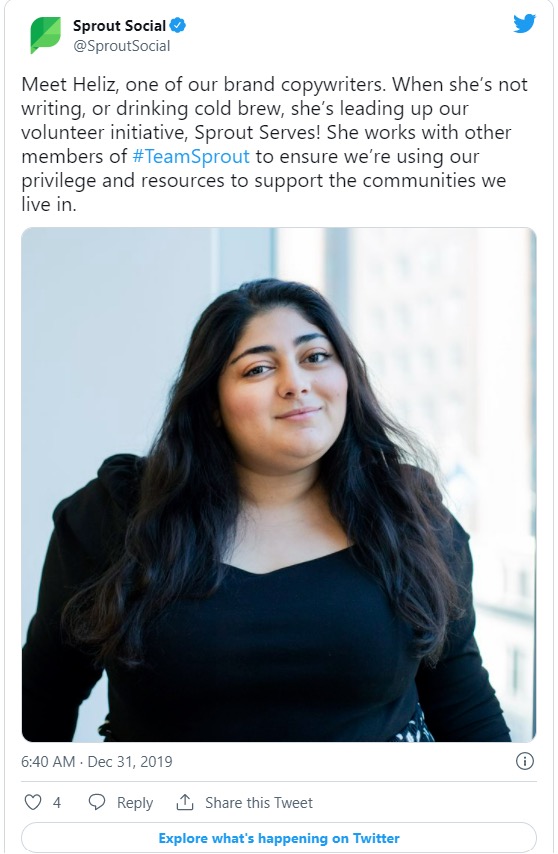
Copyright @Sprout Social, Twitter
Check out the following video to get a behind the scenes sneak peek inside Facebook's engineering office.
The video about Facebook's engineering office were made to humanise the company, give you a sneak peek into their offices and build trust with viewers. Did it change your opinion about the company?
Creating behind-the-scenes content with a smartphone
It can be overwhelming to know you have to create new material for various social media channels every day. Thankfully, there are now a variety of tools available to help us all with these tasks. You can produce, publish, and assess the performance of all your content with only one smartphone if you use the correct apps.
Let us have a look at the following apps that can help to create incredible behind-the-scenes content by using your smartphone.
Boomerang
Boomerang is an Instagram app that allows you to make a GIF-like looping videos from a collection of photographs. When your video is finished, you can either upload it right away on Instagram or store it to post later.
Videohance
With Videohance you can drastically alter the appearance of your video. Alternatively, you may dive right in and use advanced controls like contrast, white balance, and more. It gives your video an authentic look, all in real time.
By capturing life's moments and using your behind-the-scenes content a business will stand out on social media.

Lifestyle images are the most popular type of image used in marketing. This is due to people having a more positive and faster reaction to images of people doing things, than any other image.
The goal of a lifestyle image as a marketer, is to show a product in its natural environment, as it would be used and appreciated. The lifestyle images give the goods a more realistic appearance.
Benefits and challenges of lifestyle images
If consumers can envision using and enjoying it themselves, they are more likely to purchase your product. This can be beneficial to use on your website and other social media platforms, including Instagram and Facebook. Lifestyle images give the customer a hint on what to expect after buying the product.
You can use lifestyle images on:
- Social media platforms
- Banner images
- A blog on your website
- Emails
- Ads.
While lifestyle images can create a long-term emotional connection for customers with the brands they adore, there are some challenges that comes with creating the perfect image. Have a look at the following challenges that become a hurdle in creating lifestyle images.
Now you understand how to use the benefits of lifestyle images to your advantage and know to watch out for some challenges along the way. Let us dive into ways on how to create that picture perfect image.
Creating lifestyle images
To create lifestyle photography, you do not need a high-end DSL camera. A good quality smartphone that you are comfortable with can be enough to create interesting lifestyle images.
People want to see amazing quality photographs that inspire them, thanks to social media, bloggers, and influencers.
Have a look at the following four tips on how to create inspiring lifestyle images.
Add some texture
By adding texture to the background of your image, you can see how the appeal of the product improves.
Look at how this glass of milk is set against a textured background to create the sense of a fresh and natural product.
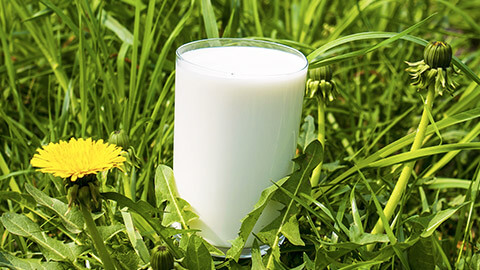
Add a prop
Props add personality and interest to images. They can add colour, visual layers, depth, and textures to any lifestyle image.
True to their name, Coffee and Seasons displays beautiful images that are colourful but not overbearing. The majority of their posts are well-planned, with each shot carefully balancing props while maintaining emphasis on the subject.

Coffeeandseasons Instagram ©Coffeandseasons
Draw attention to the product
The more engaged your followers are with your content, the more likely they are to buy your product, return for more, and suggest your brand to their friends and family.
Take a look at how Kate Spade used product placement in their ad promoting French bulldog watches. The image encourages engagement and authentically promotes a product, with the goal of catching buyers' attention.
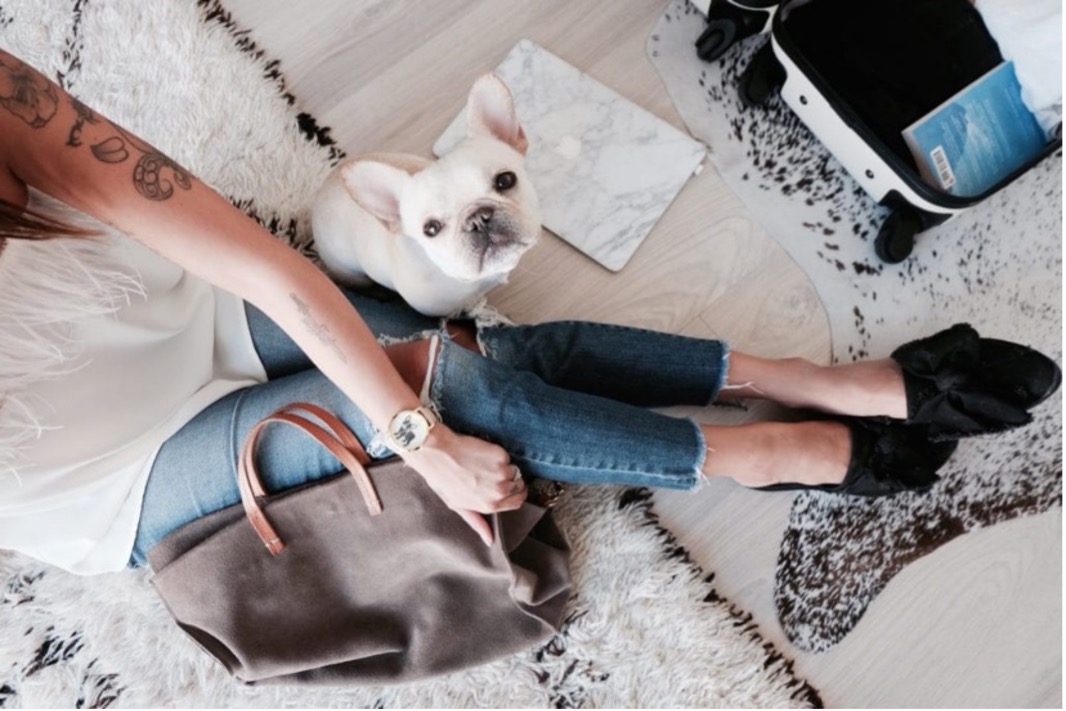
On location images
Location lifestyle images creates an experience and provokes an emotion. It stimulates the senses and transmits smells, tastes, and sensations from a single moment.
Look at a Trew Gear's location lifestyle image on their website. Customers are being drawn in by the thrills and sensations of hiking and camping. The image is compelling and clear, a new adventure awaits.

Trew gear © 2022, TREW Gear
Check out the video on how to use your smartphone to create some awesome lifestyle images. Do not be afraid to experiment with different techniques, just go for it!
For this creative activity, you will showcase your ability to develop a marketing campaign.
You are an employee of one of the largest marketing firms in New Zealand. Your employer has requested that you produce a visual design in the form of a logo, illustration, pattern, or text for one of their clients who has an upcoming sustainability conference that they are running.
The client has indicated that there is room in their marketing budget to produce a range of promotional designs that must focus on sustainable solutions.
He has asked you to prepare a pitch and potential mock-up design for your chosen promotional item/s. These include but are not limited to designs for bottles, t-shirts, and cups.
For this pitch you will need to include:
- A mood board or storyboard with your vision regarding your chosen design and items. This should include (your thought and planning process, target audience, how you will make it stand out, colour scheme, images and call to action)
- A mock-up of the advert.
- Research and document a range of existing design and production solutions. Analyse any advantages or disadvantages of each solution.
- Research and document a range of production methods and media used to produce similar design solutions.
You will use CANVA to develop your marketing pitch. Get started on CANVA now.
Post your mood board and advert in the forum to receive feedback from your peers.
